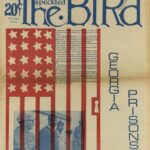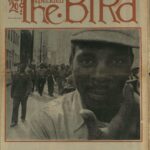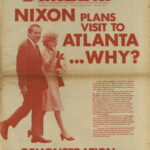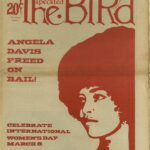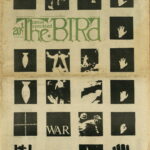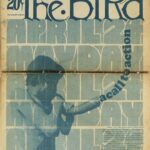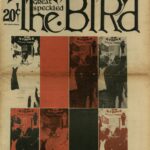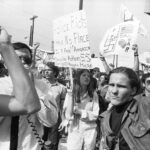Counterculture Journalism
Counterculture journalism is written outside of the mainstream media, usually on a small budget and often unpaid, at times heroic in the face of severe repression by the establishment. Driven by a strong sense of urgency, fair play and social justice, these writers, artists, photographers are often working unpaid and marginalized on the fringe of society.
Tom Coffin
One of the Bird’s founders, Tom Coffin, played many roles with the paper including staff photographer. Coffin was born on September 1, 1943, in Dearborn, Michigan. He married and moved to Atlanta where he attended graduate school at Emory University. During his time at Emory he became fascinated with the anti-Vietnam War movement and with the idea of creating a newspaper. It wasn’t long before Coffin and other similar minded students at Emory came together and put his vision into reality. He left Emory to work towards publishing a paper, which he received support and contributions from different people and professors, which formed The Great Speckled Bird.
Many of Coffin’s images capture the essence of living in Atlanta in the late 60s and early 70s. Photographs range from personal, to street scenes, strikes, and activism. The viewer is put into the scene and gets to experience the story from a different viewpoint rather than from a distance looking in.
The Great Speckled Bird
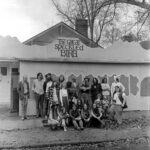
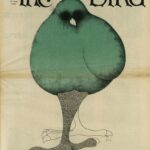
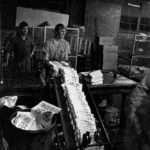
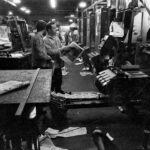
Founded March 8, 1968, during a time when the United States over a decade into the Vietnam War and civil rights movement, the Great Speckled Bird dominantly voiced more progressive opinions not found in other newspapers. The counter-culture underground newspaper was created by New Left activists from Emory University and members of the Southern Student Organizing Committee, an offshoot of the Students for Democratic Society. Founding editors included Tom and Stephanie Coffin, Howard Romaine, and Gen Guerrero Jr. The name was created after staff members heard gospel singer Rev. Pearly Brown deliver an emotional rendition of an allegorical gospel song based on Jeremiah 12:9 “Mine heritage is unto me as a great speckled bird, the birds ’round about are against her.”
The Bird started as a biweekly paper, but within half a year became a weekly staple with 22,000 paid subscriptions. The paper ran from 1968-1976, with some issues appearing in the 1980s and 2000s. The larger variety of stories it ran helped with its popularity by covering antiwar protests, worker strikes, to rock concert reviews, and local politics. Weekly staff meetings determined which stories ran, versus an editor picking and choosing, the paper maintained and earned a reputation of delivering high quality journalism. Even corporate media CBS 60 Minutes anchor Mike Wallace declared the Bird as “the Wall Street Journal of the underground press.”
With controversial topics such as Atlanta government corruption, fighting for sexual and gay liberation, and antiwar sentiment the paper suffered its own harassment issues. Newspaper sellers would often be arrested for jaywalking or selling pornographic material, schools would ban the publication from campuses, and authorities would routinely visit the office location looking for violations. However, the paper suffered its worst attack in May of 1972 when the Bird’s offices were firebombed. No arrests were ever made. In a letter to the editor of the New York Review of Books, Jack Newfield noted that the bombing occurred after the paper published an exposé of the mayor of Atlanta.
The decline in popularity for the Bird began with the changing demographics of Atlanta and the loss of the counter-culture in the city. The paper began suffering financially with a decline in its advertising revenue, and internal conflicts. In October 1976 the paper ran its final issue with a final note from its staff, “The Bird dramatically affected the lives of all who worked on it. We believe it touched its readers similarly. There is no paper available to replace it and the need for an independent alternative paper on Atlanta will never die.”
Coffin describes the formation of The Bird, http://webapps.library.gsu.edu/ohms-viewer/viewer.php?cachefile=CoffinT_L2016-07.xml#segment5610
Cover Art from the Bird
Unlike the Atlanta Journal-Constitution, the GSB covers were more artistic and used various art mediums to showcase their cover stories. Through photo-montage, illustration, printmaking techniques, and many other forms they were able to visually grab the reader’s attention in non-traditional ways.
See Special Collections’ Great Speckled Bird newspaper collection and the Social Change Collection for information on manuscripts documenting Social Change in the Southeast. See also, Tom Coffin photographs, Great Speckled Bird records, Rose Manuscript, Archives, and Rare Book Library, Emory University.
